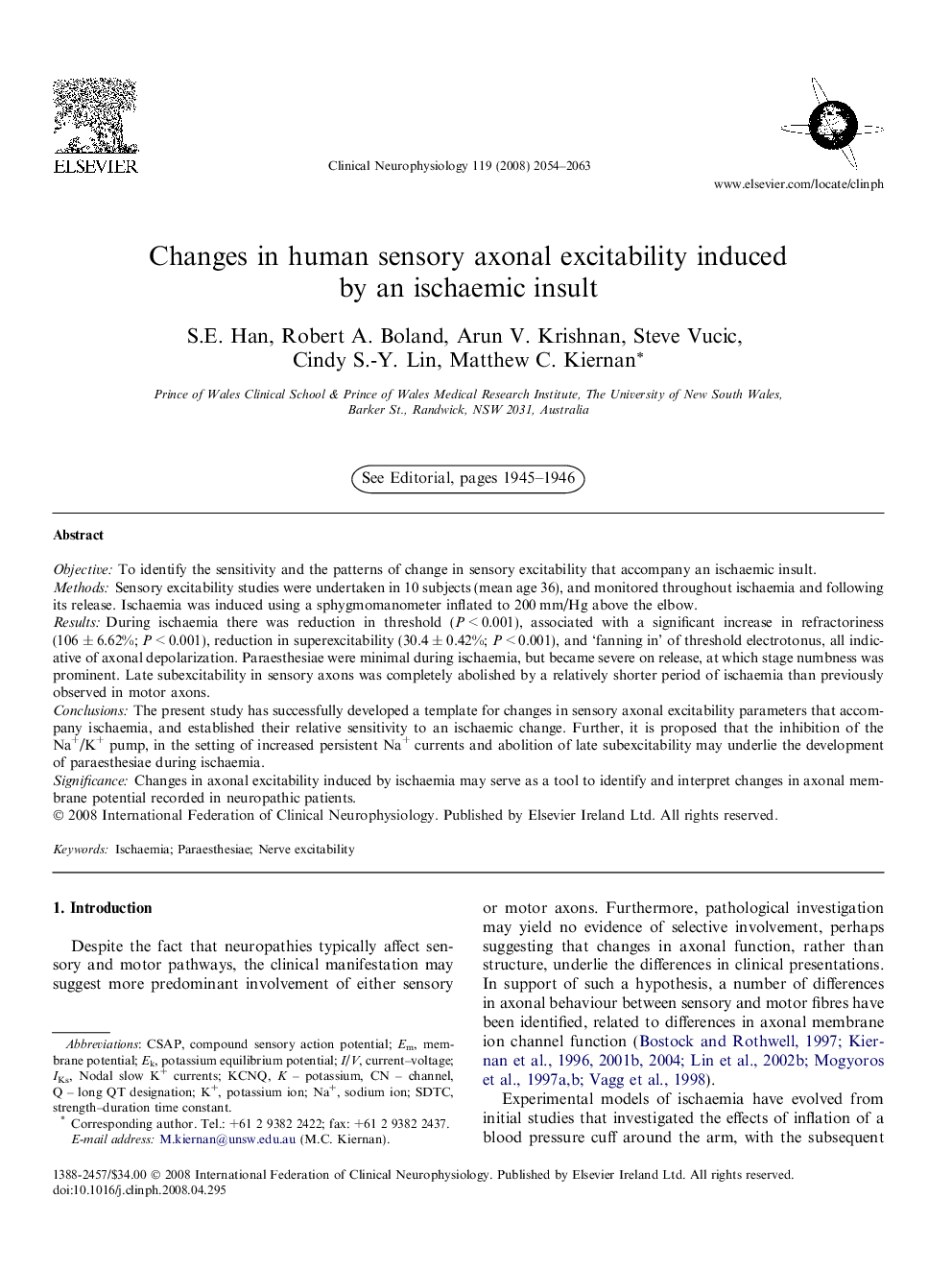| Article ID | Journal | Published Year | Pages | File Type |
|---|---|---|---|---|
| 3046912 | Clinical Neurophysiology | 2008 | 10 Pages |
ObjectiveTo identify the sensitivity and the patterns of change in sensory excitability that accompany an ischaemic insult.MethodsSensory excitability studies were undertaken in 10 subjects (mean age 36), and monitored throughout ischaemia and following its release. Ischaemia was induced using a sphygmomanometer inflated to 200 mm/Hg above the elbow.ResultsDuring ischaemia there was reduction in threshold (P < 0.001), associated with a significant increase in refractoriness (106 ± 6.62%; P < 0.001), reduction in superexcitability (30.4 ± 0.42%; P < 0.001), and ‘fanning in’ of threshold electrotonus, all indicative of axonal depolarization. Paraesthesiae were minimal during ischaemia, but became severe on release, at which stage numbness was prominent. Late subexcitability in sensory axons was completely abolished by a relatively shorter period of ischaemia than previously observed in motor axons.ConclusionsThe present study has successfully developed a template for changes in sensory axonal excitability parameters that accompany ischaemia, and established their relative sensitivity to an ischaemic change. Further, it is proposed that the inhibition of the Na+/K+ pump, in the setting of increased persistent Na+ currents and abolition of late subexcitability may underlie the development of paraesthesiae during ischaemia.SignificanceChanges in axonal excitability induced by ischaemia may serve as a tool to identify and interpret changes in axonal membrane potential recorded in neuropathic patients.
